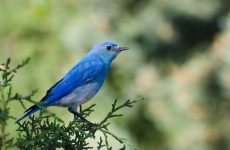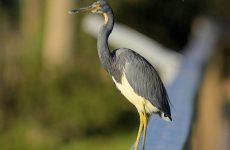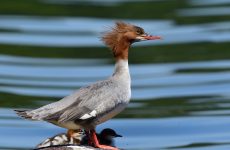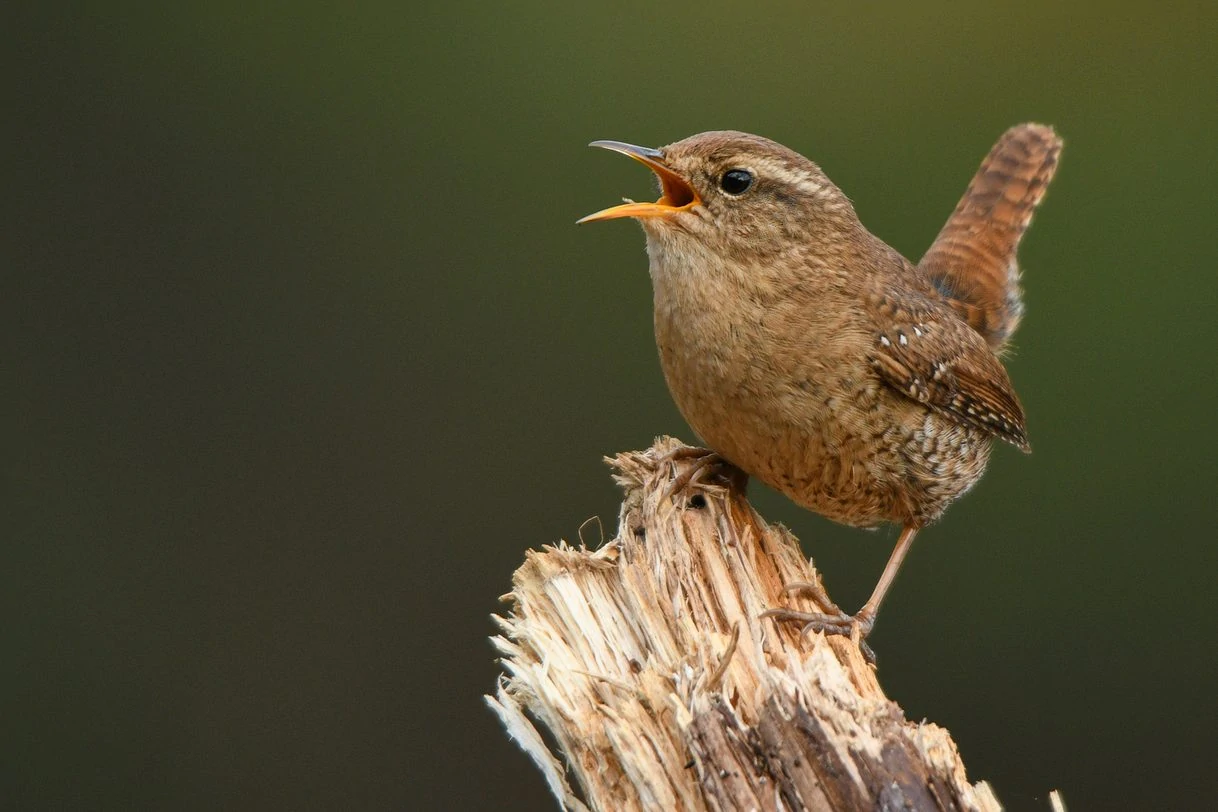
Wrens are unremarkable-looking songbirds with big personalities. They are brown, relatively small, and rather plump birds with distinctive upright tails and big voices.
Wrens are New World birds, which means they live in North and South America, except for the Eurasian Wren, which is Old World and occurs in Europe and Africa. They are members of the Troglodyidae family of birds.
Insects and spiders make up the majority of wrens’ diet, and because of this, they can live in more extreme environments, including dry and very rocky areas, with less vegetation.
It was originally thought that the Winter Wren was the same species as Pacific Wrens and Eurasian Wrens, but they have been declared as three separate species.
Throughout history, wrens have been associated with folklore and meanings, and it was once thought in Europe that killing wrens would bring bad luck.
There are 88 species of wrens in the world, and of these, 11 have been found in North America. Of the species in North America 10 are classed as regularly occurring, and 1 is accidental.
In summer, House Wrens are most frequently spotted, but they migrate, and so in winter, Carolina wrens are more frequently spotted as they do not migrate, but they are only found in eastern states.
This guide will help you identify the wren species in North America according to avibase. The wrens in this list are ordered by how frequently they are spotted, from most frequent to least frequent, according to bird watchers’ checklists for the state submitted to ebird.
You can print out a free bird identification photo guide for North America to help you identify many of the birds that visit your backyard.
11 Species of Wrens in North America:
- Carolina Wren 17.3%
- House Wren 7.9%
- Bewick’s Wren 4.0%
- Marsh Wren 2.4%
- Winter Wren 1.2%
- Pacific Wren 0.8%
- Cactus Wren 0.7%
- Rock Wren 0.6%
- Canyon Wren 0.5%
- Sedge Wren 0.4%
- Sinaloa Wren 0.0%
1. Carolina Wren
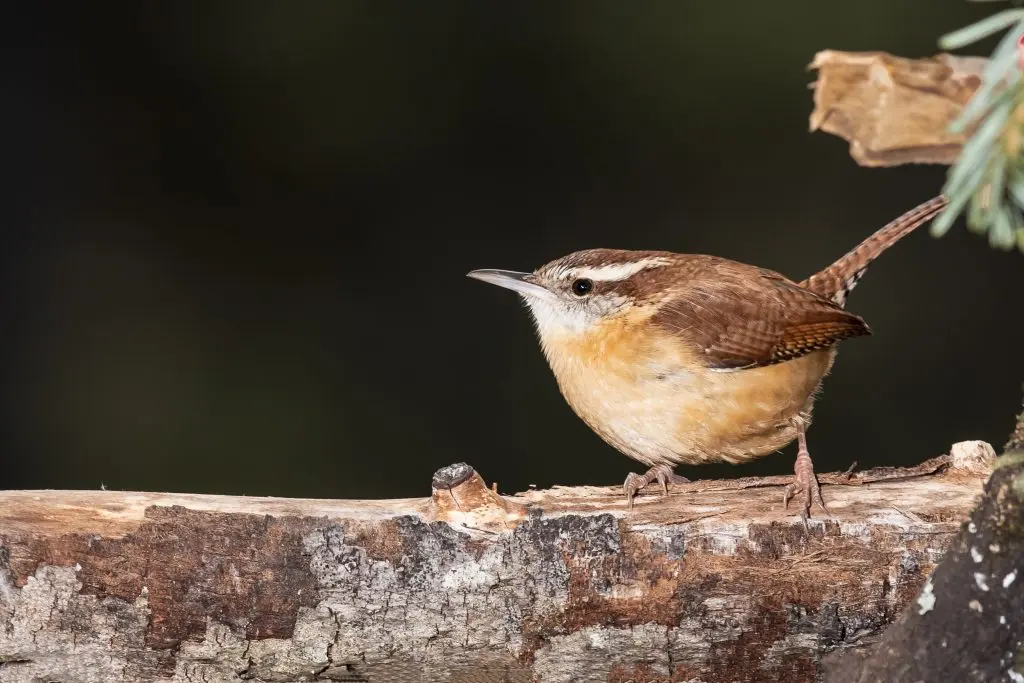
Carolina Wrens are shy birds that are dark brown on top and light brown underneath. They have a white eyebrow stripe and upright tail.
- Thryothorus ludovicianus
- Length: 4.7-5.5 in (12-14 cm)
- Weight: 0.6-0.8 oz (18-22 g)
- Wingspan: 11.4 in (29 cm)
Carolina Wrens are residents all year across Eastern and Southeastern States.
You can find Carolina Wrens in woods or thickly vegetated areas, and they will visit backyard feeders. They eat insects and spiders but will sometimes also eat lizards, frogs, and snakes.
Carolina Wren sounds: They sing a very short song of quick whistles.
Nests of Carolina Wrens are usually in trees, but they are not fussy and will build them in many places, natural or artificial. The nests are often almost circular and have a small opening in the side. They lay 3 – 7 eggs, and the eggs take around two weeks to hatch and the chicks a further two weeks to fledge.
Attract Carolina Wrens to your backyard feeders with suet feeders, hulled sunflower seeds, or peanut hearts in large tube feeders or platform feeders.
Fun fact: Carolina Wrens pair for life.
2. House Wren
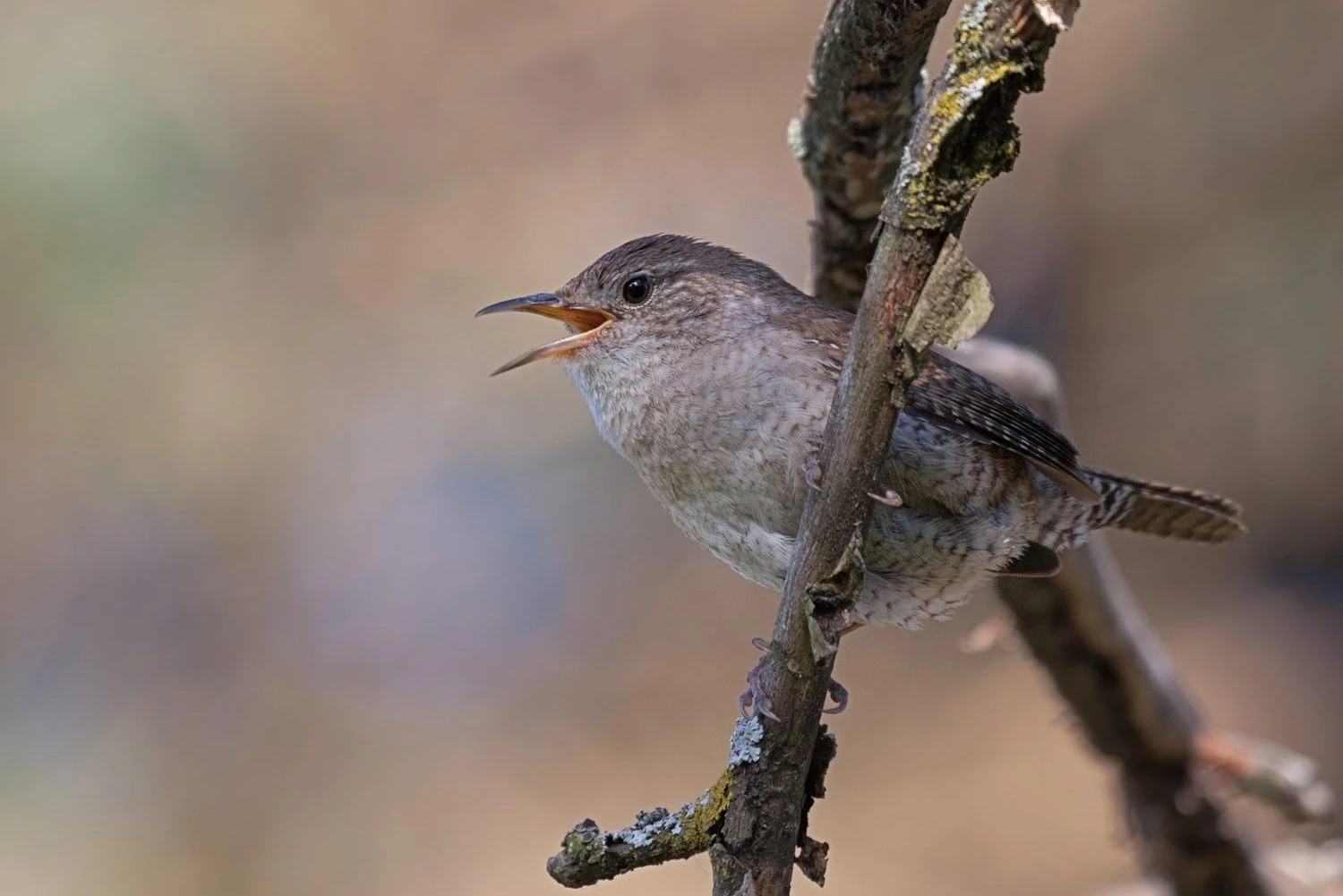
House Wrens are small nondescript round brown birds with darker barred wings and tails and a paler throat. Males and females look the same.
Distinguishing features: The eyestripe is not as obvious as in other wren species.
- Troglodytes aedon
- Length: 4.3-5.1 in (11-13 cm)
- Weight: 0.3-0.4 oz (10-12 g)
- Wingspan: 5.9 in (15 cm)
House Wrens spend their summer breeding in the US and Southern Canada before migrating to The South and Mexico for winter.
Look for House Wrens in backyards, parks, and open woods foraging for insects and spiders. They can often be found energetically hopping through tangles and low branches with their tails up, stopping to sing their cheerful song.
House Wrens eat insects and spiders, such as beetles, caterpillars, and flies. They also eat snail shells for calcium.
House Wren sounds: What they lack in tune they make up for in frequency! House Wrens are not tuneful but instead make a series of jumbled notes that change in pitch and speed.
Nests of House Wrens are in old woodpecker holes, nest boxes, or other small crevices. They prefer lightly wooded areas, make their nests from twigs, and line them with softer material. They lay 3 – 10 eggs, and the eggs take around two weeks to hatch and the chicks a further two weeks to fledge
Attract House Wrens to your backyard by leaving piles of brush or putting up a nest box.
Fun fact: House Wrens are fierce for their size, and when it comes to getting the best nest holes, they will often harass larger birds, sometimes dragging eggs or nestlings out of a nest site they want.
3. Bewick’s Wren
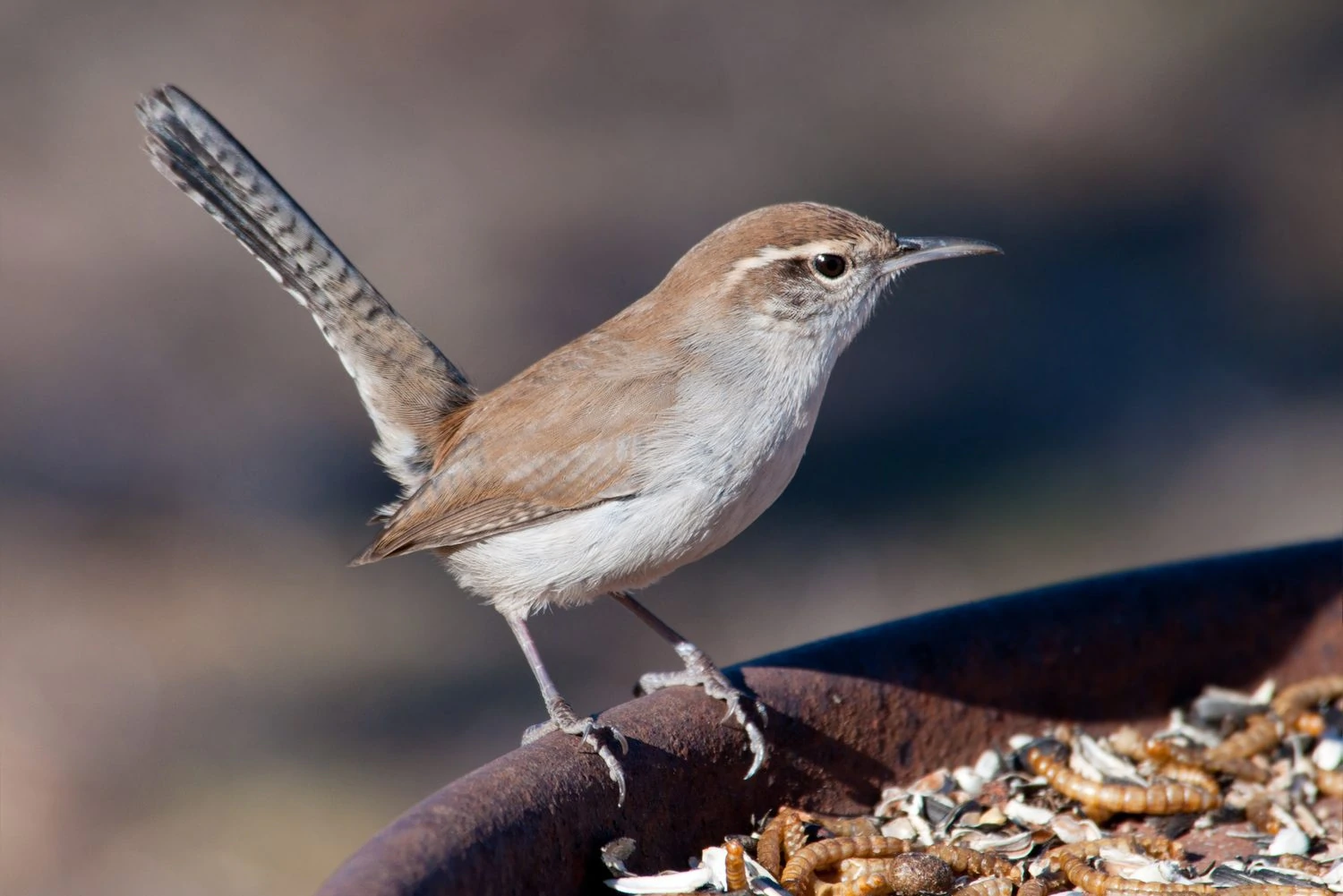
Bewick’s Wrens are brown-backed birds with long gray upright tails with darker barring. They have gray bellies and a white stripe over the eye.
- Thryomanes bewickii
- Length: 5.1 in (13 cm)
- Weight: 0.3-0.4 oz (8-12 g)
Bewick’s Wrens live in southern and western states all year with some small movements in winter.
You can find Bewick’s Wrens in scrub, thickets, and open woodland, hopping from branch to branch, flicking their long tails.
They feed on insects and larvae including, bees, bugs, caterpillars, and beetles.
Bewick’s Wren sounds: Their song starts with a couple of short higher notes, followed by lower-pitched buzzy notes.
Nests are on rock ledges, old woodpecker nests, nest boxes, or crevices in buildings. They are cup-shaped and made from sticks and grasses with a softer lining. Thye lay 3 – 8 eggs, and hatching takes around two weeks and fledging a further two weeks again.
Attract Bewick Wrens to your backyard with suet, mealworms, and hulled sunflower seeds.
Fun fact: The House Wren is probably responsible for the unfortunate decline of Bewick Wrens in the eastern US as they would destroy their eggs.
4. Marsh Wren
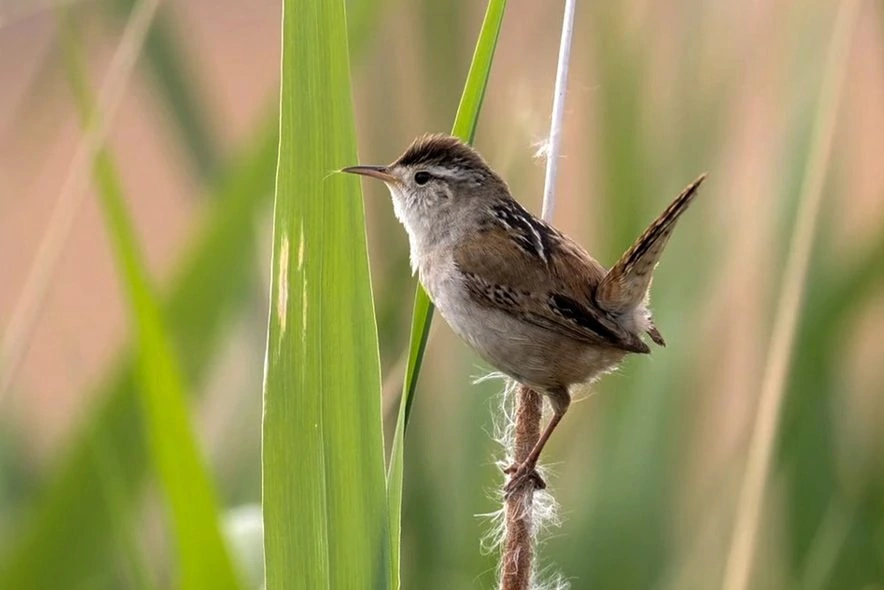
Marsh Wrens are brown with black and white streaks on their back. Their underside is grayish brown, and they have the distinctive upright tail of the wren.
They lack stripes on their shoulders and have longer bills than Sedge Wrens. Males and females look the same.
- Cistothorus palustris
- Length: 3.9-5.5 in (10-14 cm)
- Weight: 0.3-0.5 oz (9-14 g)
- Wingspan: 5.9 in (15 cm)
Marsh Wrens breed in the Northern US states and Central Canada before migrating to Southern states and Mexico. Some birds in the west and along the Atlantic Coast may remain resident all year. They can be spotted during migration in the Eastern US.
You can find Marsh Wrens in wetlands clinging to reeds, with each foot grabbing a different stalk. They can be hard to spot but listen out for singing amongst the reeds, especially at dawn and dusk.
They eat insects and spiders, which they pick off leaves close to the water.
Marsh Wren sounds: They sing a distinctive buzzy song that can last for 20 minutes.
Nests of Marsh Wrens are fully enclosed, except for a small opening in the top. They are made from reeds and grasses woven together. 3 – 10 eggs are laid, which take around two weeks to hatch and two weeks to fledge.
Fun facts: Marsh Wrens may build up to twenty round dummy nests attached to cattails, but they usually only use one and will destroy the eggs and nestlings of rival birds.
5. Winter Wren
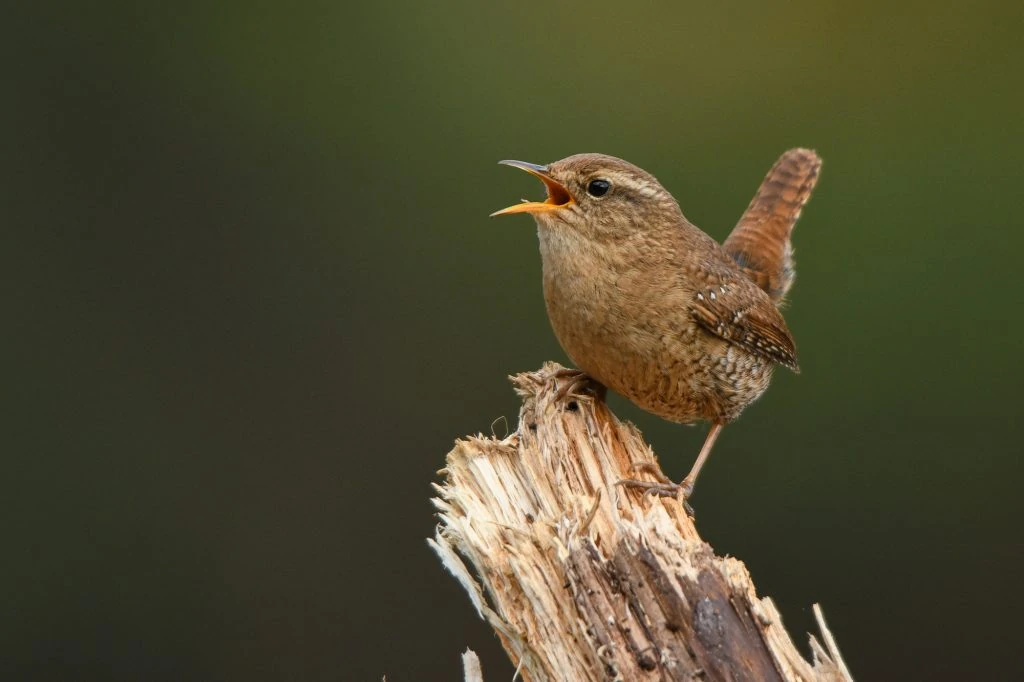
Winter Wrens are small, plump brown birds with darker barring on the wings, tail, and belly. They have a paler eyebrow stripe and short tails, which they keep upright. Males and females look the same.
Winter Wrens look very similar to Pacific Wrens, and there were once thought to be the same species, but now they are classed as different, and they sing different songs.
- Troglodytes hiemalis
- Length: 3.1-4.7 in (8-12 cm)
- Weight: 0.3-0.4 oz (8-12 g)
- Wingspan: 4.7-6.3 in (12-16 cm)
Winter Wrens are found in eastern US states in winter and northeastern US states, and Canada in summer.
Look for Winter Wrens hidden in tangled undergrowth in forests and backyards. They eat insects and spiders by rummaging through fallen leaves and decaying bark.
Winter Wren sounds: They sing a long, bubbly, sweet song that is slower than Pacific Wrens and lasts up to 10 seconds.
Nests of Winter Wrens are made of twigs, moss, and grass woven together into a round shape with a small opening. They lay 1 – 9 eggs, and hatching takes around two or two and a half weeks and fledging the same.
Attract Winter Wrens to your backyard with native plants and dese vegetation.
Fun fact: Winter Wrens nests are round in shape, with a small opening, and sometimes hanging from trees.
6. Pacific Wren
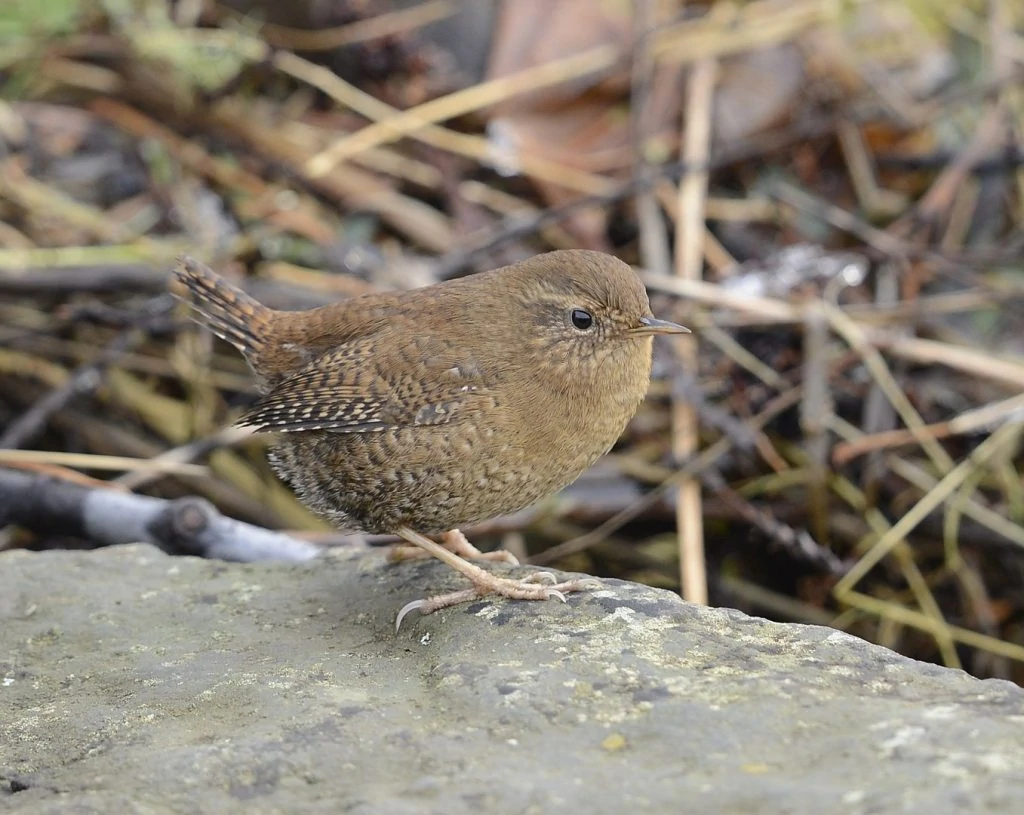
Pacific Wrens are brown all over with darker barring on the wings, tail, and belly. They have a paler eyebrow stripe and short tails, which they keep upright. Males and females look the same.
Distinctive features: They are the smallest wren in the United States.
- Troglodytes pacificus
- Length: 3.1-4.7 in (8-12 cm)
- Weight: 0.3-0.4 oz (8-12 g)
- Wingspan: 4.7-6.3 in (12-16 cm)
Pacific Wrens are found along the West Coast from Alaska to California. Those on the coast remain all year, but those inland in Canada migrate south for winter.
Look for Pacific Wrens on the ground in forests, often hidden in the mass of leaves and rotting logs. They eat insects, spiders, flies, and bees.
Pacific Wren sounds: They sing a long, jumbled song of many different fast, high-pitched notes.
Nests of Pacific Wrens are made of twigs, moss, and grass woven together into a round shape with a small opening. They lay 1 – 9 eggs, and hatching takes around two or two and a half weeks and fledging the same.
Attract Pacific Wrens to your backyard with native plants and dense vegetation, and try installing a nest box.
Fun fact: Pacific Wrens will often huddle up together when it is cold, with many individuals sharing the same cavity or nest box. Once over 30 were found together in a nest box.
7. Cactus Wren
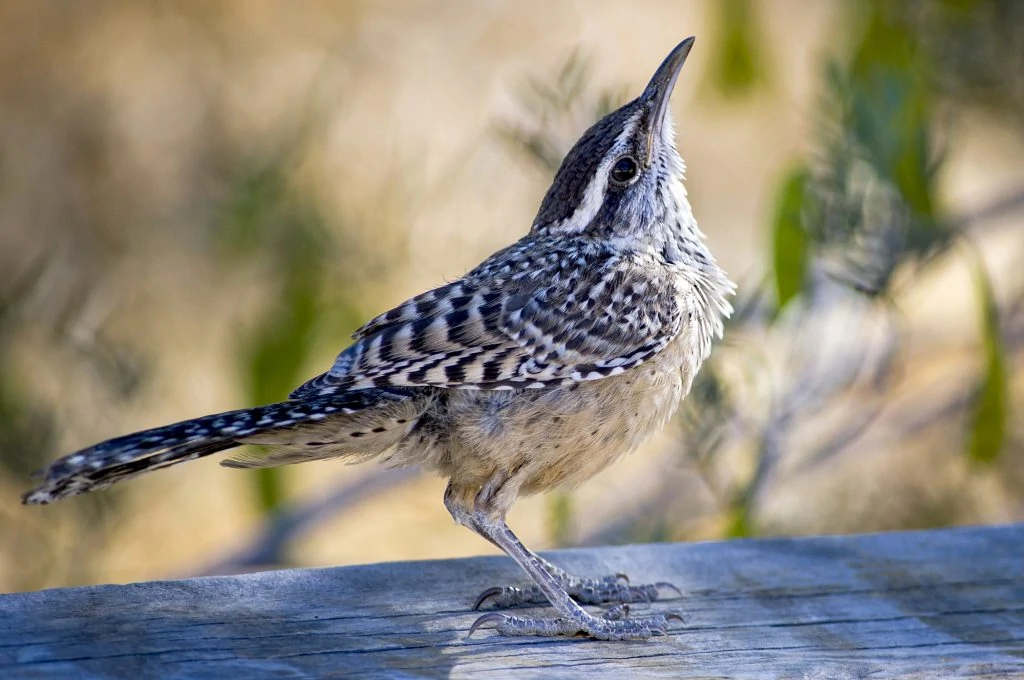
Cactus Wrens are easier to recognize with their speckled undersides, large bold eyebrow stripe, and large size. They are brown on the back with lots of streaking.
Cactus Wrens do not have an upright tail like most wrens. Instead, they fan their tails out to show the white tips.
- Campylorhynchus brunneicapillus
- Length: 7.1-8.7 in (18-22 cm)
- Weight: 1.1-1.7 oz (32-47 g)
Cactus Wrens are residents in dry areas in southwestern states from California to Texas and Mexico.
You can find Cactus Wrens, unusually for wrens, out in the open at the top of a cactus singing or eating the cactus fruit. They can also be seen on the ground hunting for insects and spiders by turning over leaves and other debris.
Cactus Wren sounds: They make a distinctive buzzy two-tone song that often rises in volume as it goes along.
Nests of Cactus Wrens are round-shaped with a small tunnel entrance in desert vegetation. They lay 2 – 7 eggs, which hatch in around two and a half weeks, and the chicks fledge in around three weeks.
Fun fact: Cactus Wrens do not need to drink water, which is handy in the desert, and instead get all they need from insects and fruit.
8. Rock Wren
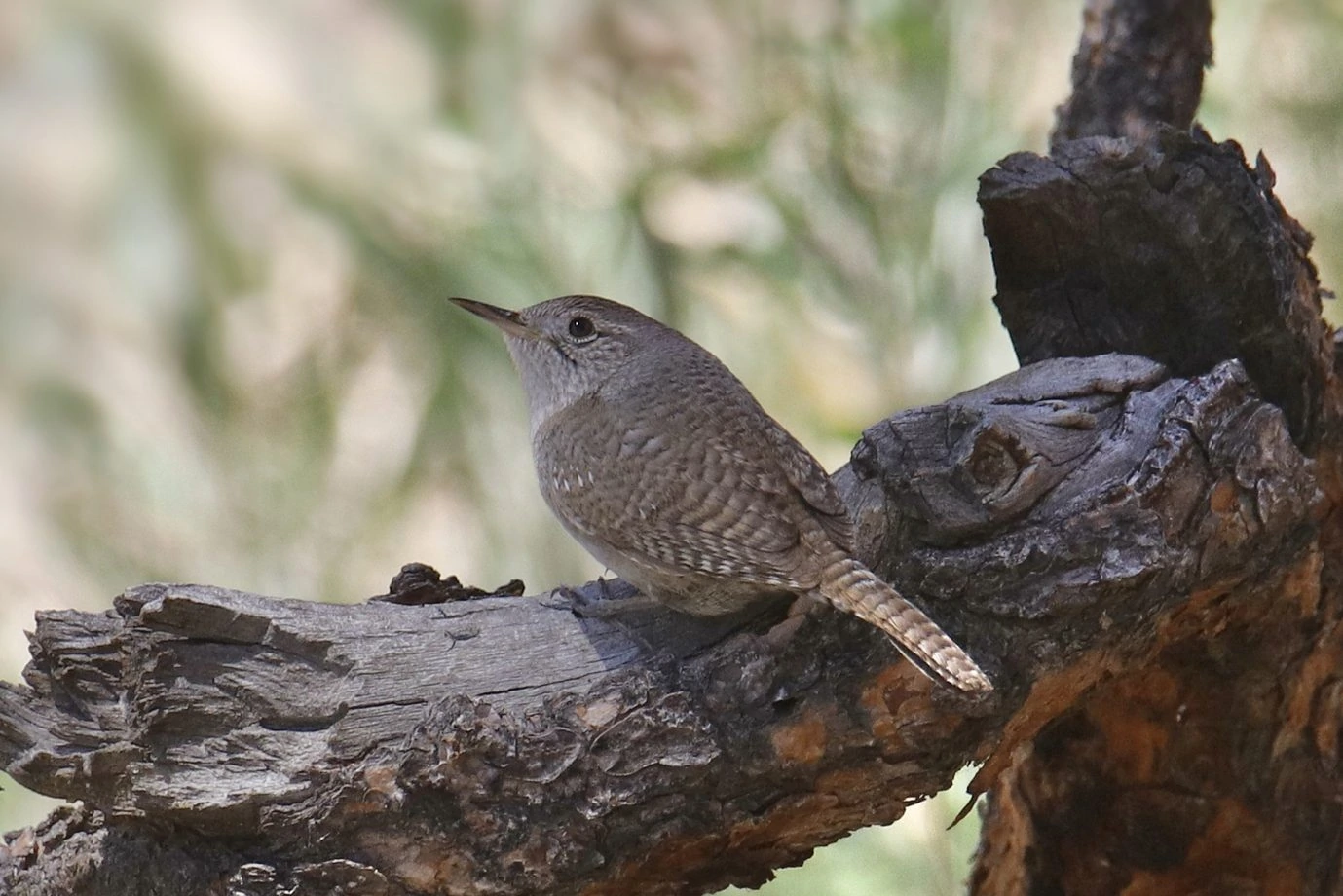
Rock Wrens are pale brown on the back with darker flecks. They have barring on the wings and tail and are pale underneath, but with buff coloring on the lower flanks and belly.
Distinctive features: They have a pale eyebrow stripe, a long, slightly curved bill, and dark legs.
Males and females have the same coloring. Rock Wrens bob up and down, especially when agitated. This can help with ID for this bird.
- Salpinctes obsoletus
- Length: 4.9-5.9 in (12.5-15 cm)
- Weight: 0.5-0.6 oz (15-18 g)
- Wingspan: 8.7-9.4 in (22-24 cm)
Rock Wrens are found in dry, rocky areas in western US states and southwest Canada. Those in the south and west remain all year, but those in central US states migrate south for winter.
Look for Rock Wrens in dry and rocky areas that do not have much vegetation. They feed on insects that they find in crevices in the rocks.
Rock Wren sounds: They may know over 100 songs which are often the same sound repeated several times before they then change and repeat a different sound several times. Their songs are different pitched each time.
Rock Wrens nests are on the ground, usually in a cavity or depression in rocky areas, and they add a layer of small stones followed by softer material such as wool and moss. They may lay up to 8 eggs and up to 3 broods a year.
Fun fact: They build a walkway out of stones and other objects leading to their nest, but it is unknown why. Also, they do not drink water and, in fact, get all the moisture they need from eating insects.
9. Canyon Wren
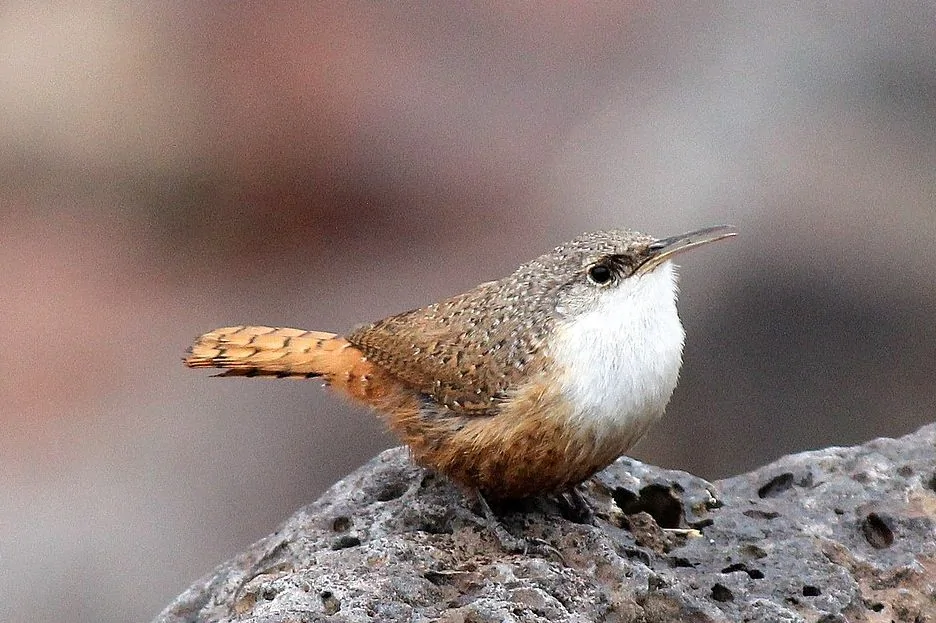
Canyon Wrens are stocky brown birds with white throats and lighter barred tails. Their heads are more grayish-brown and speckled. They have short, strong legs, which they use to cling to rocks. Males and females look the same.
Distinctive features: They are found in similar rocky areas as Rock Wrens, but they have a white throat and dark belly.
- Catherpes mexicanus
- Length: 4.5-6.1 in (11.4-15.4 cm)
- Weight: 0.3-0.7 oz (9.9-18.3 g)
- Wingspan: 7.1-7.9 in (18-20 cm)
Canyon Wrens are found in the west from southern British Columbia down through western US states and into Mexico, and they do not migrate.
Look for Canyon Wrens in rocky areas where they forage for insects and spiders hidden in crevices. Their short, strong legs mean they can cling onto rocks and even scale a vertical rocky cliff.
Canyon Wren sounds: They have a distinctive song that descends and slows and finishes on a few raspy notes.
Nests of Canyon Wrens are built in crevices from twigs and grasses lined with wool and feathers.
Fun fact: Canyon Wrens steal food from spiders webs and wasp nests.
10. Sedge Wren
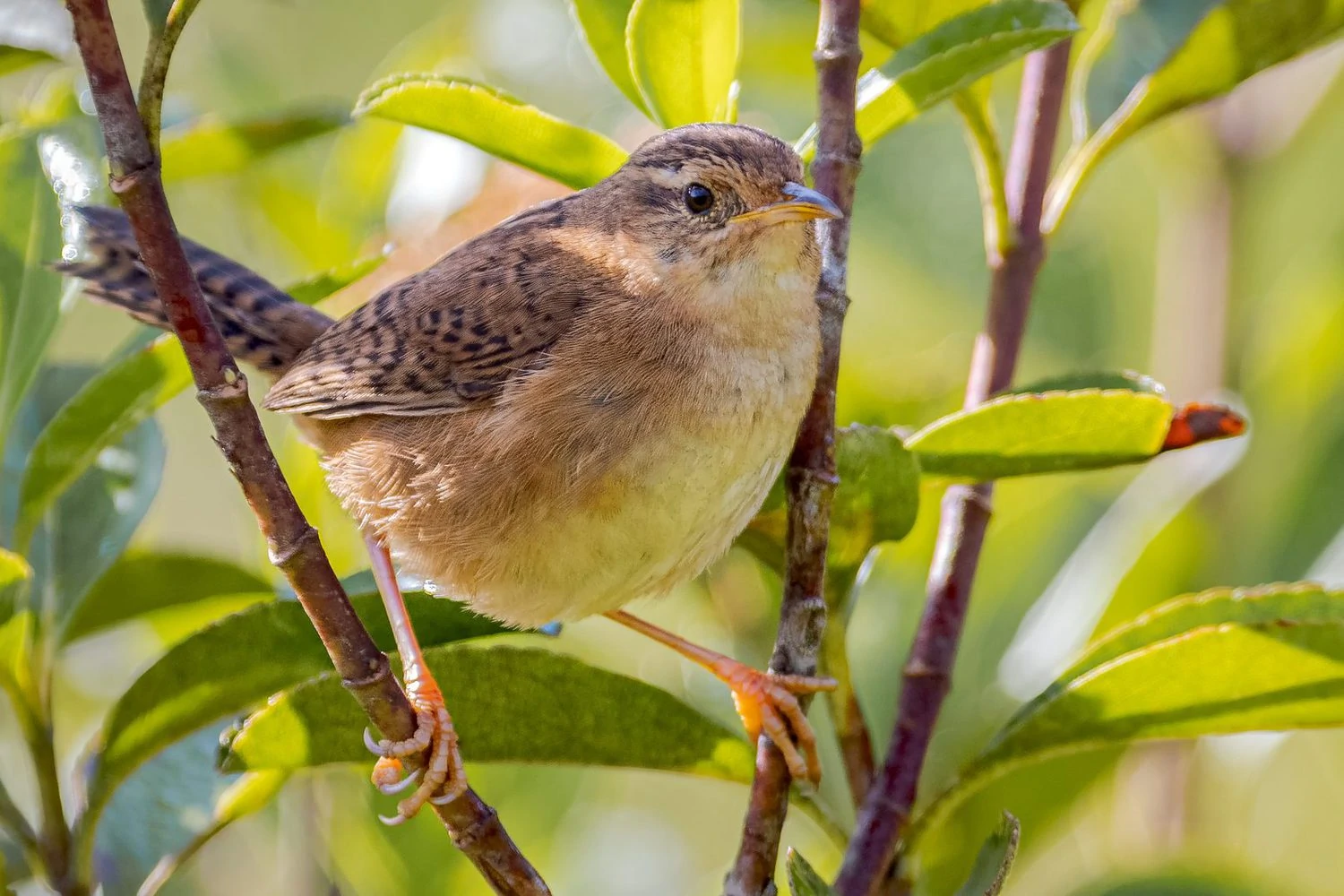
Sedge Wrens are small brown wrens that are darker above with streaking and barring and paler underneath. They have a small light eyebrow stripe. Males and females look similar.
Sedge Wrens look similar to Marsh Wrens and can be found in similar wet areas, but Marsh Wrens lack striped shoulders and have lighter bellies.
- Cistothorus stellaris
- Length: 3.9-4.7 in (10-12 cm)
- Weight: 0.3-0.3 oz (7-10 g)
- Wingspan: 4.7-5.5 in (12-14 cm)
Sedge Wrens breed in southern Canada, the Midwest, and sometimes further to the east of the US. They migrate and spend winter in southeastern states and northern Mexico, near the Gulf and Atlantic coast.
You can find Sedge Wren very hidden in wet grasslands, marshy areas, and meadows with lots of vegetation. They usually prefer shallower areas than Marsh Wrens and hunt for insects and spiders.
Sedge Wren sounds: Their song is simple and consists of a few short notes followed by a similar pitch of a few more rapid notes.
Fun fact: Sedge Wrens are not so sweet and will pierce the eggs of other Sedge Wrens that nest too close, destroying them.
11. Sinaloa Wren
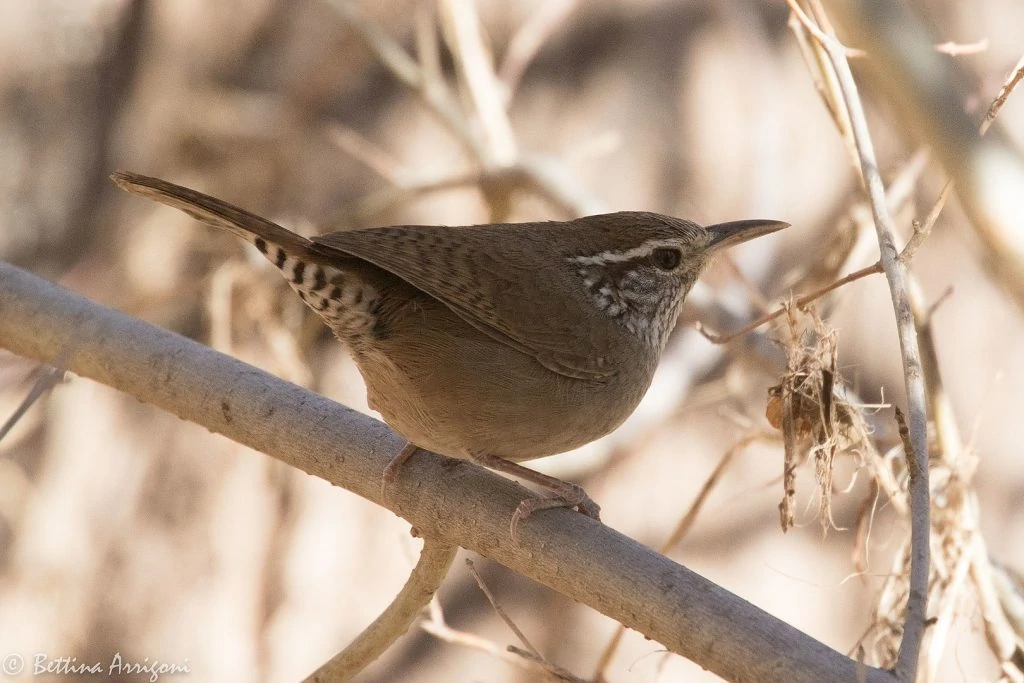
Sinaloa Wrens are brown all over, with darker barring on the tails, white throats, stripes on the side of the head, and a bright white eyebrow stripe.
- Thryophilus sinaloa
- Length: 4.6 -5.5 in (12-14 cm)
- Weight: 0.38 -0.70 oz (11-20 g)
Sinaloa Wrens are usually residents along the west coast of Mexico, but they also visit Arizona.
You can find Sinaloa Wrens in deciduous forests, often on the ground, looking for insects but also up in the trees hunting.
Fun fact: Sinaloa Wrens build their nests near aggressive ant or wasp nests to provide some protection.
How to Attract Wrens to Your Backyard
Having wrens visiting your backyard lets you listen to their beautiful singing and watch these energetic birds up close. However, only a few species of wren regularly visit backyards, including House Wrens, Carolina Wrens, and Berwick Wrens.
To attract wrens to your backyard, try these ideas:
- Dont be too tidy – Provide habitats for insects and spiders, which are wrens favourite food. Leave fallen leaves, brush piles and spider webs.
- Provide clean water – prefferably running water in several locations.
- Nesting sites – wrens will use nest boxes or maybe your old boots if left out!
- Food – wrens will eat mealworms and crickets if provided. Also try peanuts pieces and suet.
How Frequently Wrens are Spotted in Summer and Winter
Checklists are a great resource to find out which birds are commonly spotted. These lists show which Wrens are most commonly recorded on checklists on ebird in summer and winter.
Wrens in Summer:
House Wren 17.5%
Carolina Wren 15.5%
Bewick’s Wren 3.8%
Marsh Wren 3.2%
Winter Wren 1.0%
Pacific Wren 0.8%
Rock Wren 0.8%
Sedge Wren 0.7%
Canyon Wren 0.6%
Cactus Wren 0.6%
Sinaloa Wren 0.0%
Wrens in Winter:
Carolina Wren 17.0%
Bewick’s Wren 3.8%
House Wren 2.1%
Marsh Wren 1.8%
Winter Wren 1.4%
Pacific Wren 0.8%
Cactus Wren 0.7%
Rock Wren 0.5%
Canyon Wren 0.3%
Sedge Wren 0.3%
Sinaloa Wren 0.0%


